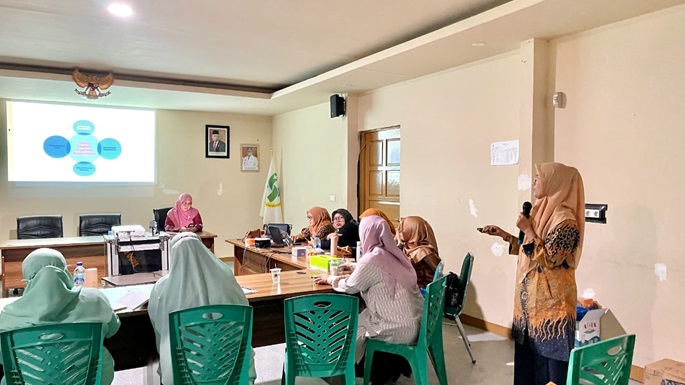Efektifitas Sosialisasi Supervisi 4S dalam Rangka Peningkatan Budaya Keselamatan Pasien Effectiveness of Socialization 4S Supervision to Improve Patient Safety Culture
Main Article Content
Abstract
Healthcare facilities must adhere to patient safety principles to reduce the risk of harm. Prof. Dr. M.A. Hanafiah SM Batusangkar Hospital is among the healthcare providers in West Sumatra, necessitating endeavors to enhance and sustain service quality, especially regarding patient safety. The effectiveness of the patient safety culture depends on the 4 S supervision elements, including Structure, Skill, Support, and Sustainability. The 4S supervision model guides and aids nurses in advancing their skills related to patient safety. Survey findings at the hospital revealed that the promotion of 4S supervision was suboptimal, manifesting as nurses' limited grasp of the concept. On July 28-29, 2023, a structured socialization, education, and mentorship program was conducted for nursing executives and managers. The objective was to empower nurses to incorporate multilayered supervision into patient care and oversee the implementation of patient safety in inpatient, outpatient, and emergency room settings, aiming to enhance the patient safety culture.
Downloads
Article Details

This work is licensed under a Creative Commons Attribution-ShareAlike 4.0 International License.
Authors who publish with this journal agree to the following terms:
- Any article on the copyright is retained by the author(s).
- Author grant the journal, right of first publication with the work simultaneously licensed under a Creative Commons Attribution License that allows others to share work with acknowledgment of the work authors and initial publications in this journal.
- Authors are able to enter into a separate, additional contractual arrangements for non-exclusive distribution of published articles of work (eg, post-institutional repository) or publish it in a book, with acknowledgment of its initial publication in this journal.
- Authors are permitted and encouraged to post their work online (e.g., in institutional repositories or on their websites) prior to and during the submission process, as can lead to productive exchanges, as well as earlier and greater citation of published work.
- The article and any associated published material is distributed under the Creative Commons Attribution-ShareAlike 4.0 International License
References
To be published
